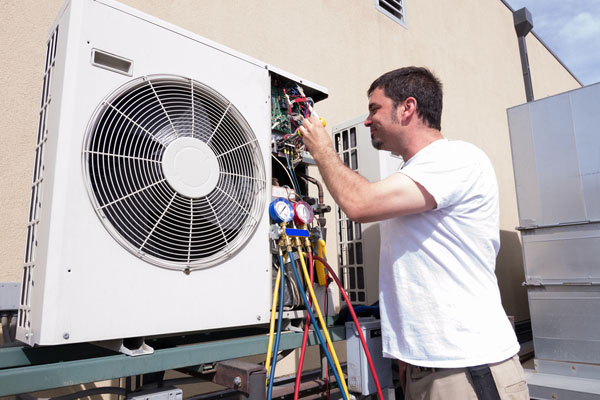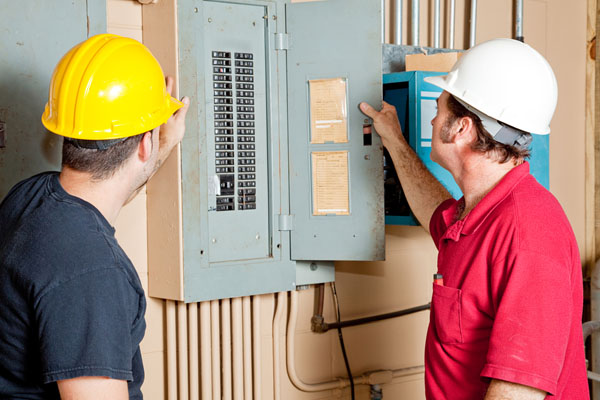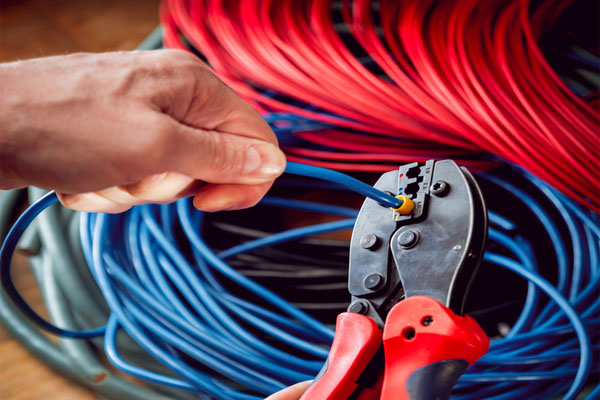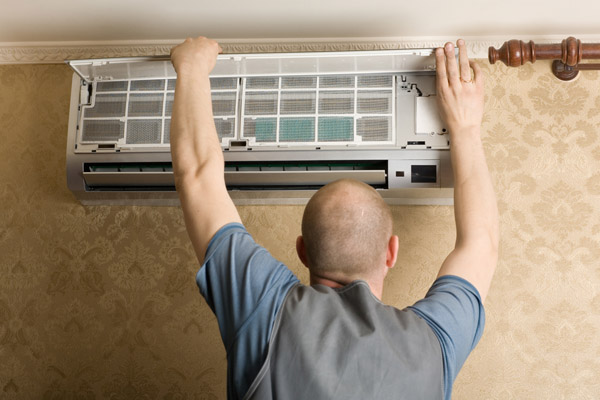
An energy-efficient and popular choice for heating and cooling your home or business are ductless mini-splits. They have two components, the outdoor unit, and the indoor unit. The outdoor unit contains the condenser and the compressor. The indoor unit provides warm or cold air in the different zones of the house.
Installing a mini-split is simple when you compare it to installing central heating and cooling. But, they are a bit more complicated than window ACs that you just plugin. Mini-splits require proper wiring and connections to the house’s electrical panel. If you think a mini-split system is ideal for your home, contact an HVAC professional for installation. A professional will be able to do the ductless installation properly, including the ductless mini-split wiring. They have lots of training and experience and they can make sure your mini-split works at its optimal performance and capacity.
Ductless Heat Pump Wiring: Things You Should Know
Contents
To make sure your mini-split has the proper wiring, keep reading. This article discusses all you need to know about the wiring that is essential during a ductless installation.
Electrical Service

The electrical service panel provides power to the outdoor unit. It uses a surge protector and a disconnect box for safety. These connect with electrical wires that are in a weather-proof wire or a whip.
Different mini-splits have different power requirements depending on the model and size. Most systems typically need 220 volts or higher, but some 9k to 12k systems may only need a 110-volt service. It’s important the breaker panel can take on additional voltage since these systems connect to the electrical service panel.
To ensure the proper installation of your mini-split, contact a professional technician to wire your system.
Wire Gauges
Mini-splits require specific wire gauge or thickness. It’s important that the connecting wires are quality and are the right gauge. If not, it can be potentially dangerous. Also, check to see if the connecting cable is UL-listed and has been evaluated for sun exposure. UL-listed wires have passed the Underwriters Laboratories’ safety tests. An expert technician will be able to make sure your electrical wiring meets these requirements.
The standard wire sizes are 2, 6, 8, 10, 14, and 16-gauge wire. The thickness determines how much current can safely pass through the wire. The thicker wire has a lower wire gauge and it can handle more current. On the other hand, the thinner wire has a higher wire gauge that can conduct less current. For example, a #6 cable can run 60 amps, while a #14 wire can only handle 15 amps.
Connecting Cable

A connecting cable (AKA a four-conductor cable) is a special type of wire that goes between the indoor and outdoor units. It supplies power and carries information between these two components. Most mini-splits use a 14 AWG 4-conductor stranded cable that is run through a conduit to abide by the local codes.
Disconnect Box: Non-Fused Versus Fused
A disconnect box, otherwise known as a switch box or a fuse box, holds the controls which supply energy to your mini-split. It has easy access for an HVAC professional to turn off the power to your mini-split. Disconnect boxes are required by code.
Many homeowners like non-fused disconnect boxes rather than a fused one. A reason for this is because the breaker in the service panel has the same protection a fuse would provide. Also, homeowners can reset circuit breakers, but a fuse needs to be replaced. Fuses can be damaged by the elements too, which makes them unsafe.
Electrical Whip
Electrical whips are located outdoors. They are made up of high-voltage wires hidden in a case that protects it from the sun, rain, and other elements. They connect the 120v/220v power between the disconnect box and the condenser.
How An HVAC Contractor Wires A Ductless Mini-Split

Now that you know about the different types of wiring your mini-split requires, the next step is wiring your mini-split correctly. This is a great challenge, so it is best to contact a licensed HVAC contractor to do this work.
These are the steps a professional will take when installing your mini-split system:
Step 1: Install A Disconnect Box
Installing a disconnect box is necessary to adhere to code. A professional will run a 230/208- or 155-volt line from the home’s primary break box to the disconnect box next to your unit. A technician will also ensure that the voltage requirement is met because each system is different.
Next, the HVAC contractor wires the hot leads to the fused connections in the ground and the box to the provided connection. Then, the faceplate on/off switch is attached.
Step 2: Attach The Electrical Wire Whip
The electrical whip is run from the disconnect box to the unit. An electrical whip is necessary to meet the code.
Step 3: Connect The Wires
According to your unit’s specifications, the electrical wires will be connected. Each mini-split has slightly different connections based on the make and model. Your HVAC technician will be able to identify the wires and wire everything correctly.
Step 4: Connect The Wires From The Indoor Unit To The Outdoor Unit
Single-zone and multi-zone units have a different number of connections. If it is a multi-zone unit, professionals typically number the indoor units for easy cross-referencing. Each wire has a specific number so the technician can make sure each indoor unit connects to the input that it’s wired to. This is important because otherwise, your mini-split will not function properly.
Step 5: Connect The Wires In The Indoor Unit
The HVAC contractor will need to make the connections in the correct order just like the outdoor unit. The HVAC contractor will connect the main wires and the ground wire to the right terminals. A round crimp-style terminal ensures that the connection is secure. A technician can if this is necessary for your installation process.
This is the last step of the electrical part of the installation. Do not hesitate to talk with your HVAC ductless installation expert if you have any more questions or concerns about your mini-split system.
Protecting Your Investment
HVAC systems are a considerable investment. Manufacturers offer warranties that cover a range of unfortunate circumstances like manufacturing defects, but they usually do not cover damages from electrical surges.
A lightning strike, a power surge, or an irregularity in the power supply can cause a power surge. This can cause detrimental damages to the electrical components in your mini-split system, or even complete system failure. If this happens, you’ll need to replace your mini-split even one that is only a few years old.
The only way to prevent this is to install a surge protector. They are very easy and quick to install. An HVAC technician can install one in just over 10 minutes. Surge protectors will give you the peace of mind and protection of your warranty.
Conclusion
For an easy and hassle-free mini-split installation, contact a licensed and qualified professional. Their training and experience will guarantee your mini-split is wired accurately. You can rest easy with the knowledge that your mini-split will work at its optimal efficiency.
Check Out One Of Our Ductless Installation Projects
Mitsubishi Ductless Installation Project In Rocky Hill, New Jersey
Call PFO Heating & Air Conditioning To Learn More About Ductless HVAC Systems
 Interested in learning more about ductless HVAC systems? For all your HVAC system needs, call PFO Heating & Air Conditioning today. Our technicians are all NATE-certified, and they have a great deal of experience. They’ll also determine what your home comfort needs are and find the best and most affordable solutions to meet them.
Interested in learning more about ductless HVAC systems? For all your HVAC system needs, call PFO Heating & Air Conditioning today. Our technicians are all NATE-certified, and they have a great deal of experience. They’ll also determine what your home comfort needs are and find the best and most affordable solutions to meet them.
As a full-service HVAC company, PFO Heating & Air Conditioning offers an array of HVAC services. This includes heating and cooling installations, tuneups, repairs, and much more. We offer free, in-home consultations. Call now to schedule an appointment.
Click here to contact us now or call us at (800) 253-9001 to find out more!



